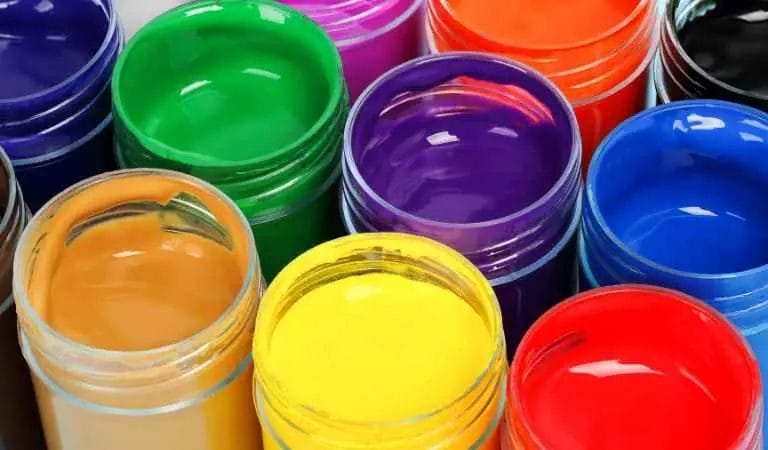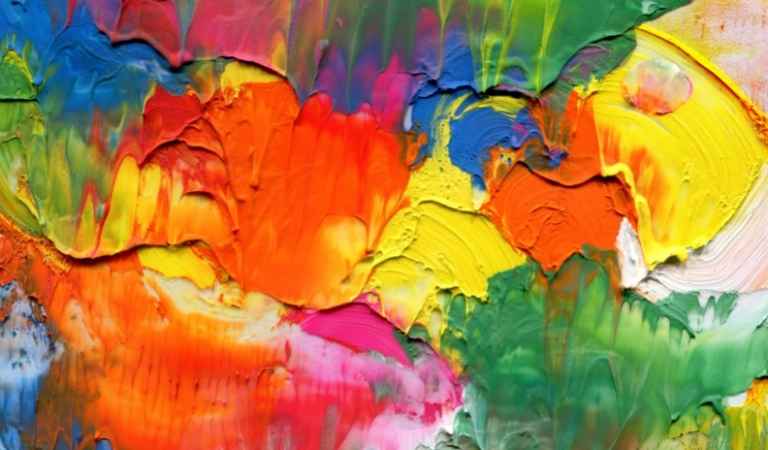Lumpy acrylic paint is a common problem for crafters. Acrylic paints are water-based and have the potential to separate, turn cloudy or form lumps when they get old.
There is also the chance that your paint was not mixed well at the factory which can lead to clumping and lumpiness. Luckily there are some ways you can fix this!
Read on to find out how! I’m going to show you how easy it is to fix your lumpy acrylic paints.

What’s the Reason Behind Lumps in Acrylic Paints?
The main reason acrylic paints can form lumps is that the paint has gone bad and clumped together. Sometimes you will come across lumpy paint because it was poorly mixed at the factory or exposed to moisture. Here are the reasons in detail-
Poor Quality Paint
If the paint you have is of poor quality, it will start to break down and form lumps that are hard or impossible to fix. People often fall for the cheaply priced products as they see no visible difference between an expensive paint and a cheaper one. Finding cheap is good, I always do that, but you need to ensure you get a good quality product at the best price.
Paint is too Old
Most acrylic paint gets clumpy because the paint is too old. The water in the acrylic has started to evaporate and this will cause clumping of the pigment particles which leads to lumpy paint. This is easy to fix compared to the first reason we have pointed out.
Exposure To Moisture
Acrylic paints can turn lumpy when they’re exposed to moisture like humidity, dampness, or even condensation from a cold glass. This will also happen if the paint has been exposed to air and not sealed perfectly.
Faulty Mixing at the Factory
If your paint has been mixed at a factory, there is also a chance that it was not mixed properly and this can cause clumping. The acrylic pigment particles may have separated from the water which leads to lumpy paint.
Paint Container Was Compromised
If your acrylic paint container has been compromised or the container was damaged, this can lead to the separation of pigment particles and clumping.

Using Multiple Layers Fast
Many people face lumpy paint issues when they are trying to go creative with their artwork. They use multiple layers of acrylic paint to create a certain texture or look.
While this is a great idea, it can also lead to clumping because the pigment particles will not have enough time to dry between applications. In case you are trying to achieve a thick texture, it is better to wait for one layer to dry before applying the second layer to avoid acrylics getting messed up.
How to Fix Lumpy Acrylic Paint
Now that we have covered what causes lumpy paint, it is also important you know how you can fix them! Here’s how we can fix them! We have broken down the steps to make it easy for you.
Fixing Wet and Lumpy Acrylic Painting
In case you were pouring or painting with a good pot of acrylic and suddenly see a bump on the surface, you will need to get it out of the canvas fast with a pair of tweezers. In case it is a small lump, we recommend you use your finger and gently try to work the paint back into place. The art should be alright.
Fixing Old and Dried Paint Lumps
If you have acrylic paints that are not wet anymore or old bumps on them, refer to these steps to smooth out the lumpy paint-
Paint Scrubber: this tool helps remove excess paint from the surface of the painting. A paint scrubber is an invaluable tool for any painter as it helps remove excess pigment particles from the surface to avoid lumps and bumps in their work. You should try to get rid of the bump by using this first.
Cleaning with Water: you can use a clean rag or paper towel, dampened with water, to wipe away the bump if it’s significantly large.
Paint Remover: if the wet or dry lumpy paint refuses to go away, then it’s time for an acrylic paint remover. Acrylics can be removed with a few drops of this chemical agent on top of them. This will loosen up the paint and make it flow back to the surface.

Fixing Lumpy Paint with a Wet Brush
If your acrylic is lumpy or chunky because of moisture, then you can use a wet brush on top of them gently and try to work it out from there. This will get rid of any clumping that might have been caused by exposure to humidity.
Fixing with a Blender Tool
If your acrylic paint has been mixed at the factory and is lumpy, then chances are it’s not properly mixed. To fix this problem, you can use a blender tool to get rid of the lumps. This will loosen up any pigment particles that might have separated from the water.
Pro Tips for Amateur Artists
- Always store the paint in an airtight container to avoid the paint getting lumpy.
- Always use a thin layer of acrylic paint first and wait for it to dry before applying another layer on top of it.
- Always clean your brush properly before and after use to get rid of any unwanted particles.
- Paint thinner is a good idea if you are not getting the desired result after trying the above-mentioned fixes.
- Avoid cheap products unless you are using them for painting practice.
- If you see signs of thick portions in the paint, better mix the whole container first to see if that resolves the issue.
Final Thoughts
It can be frustrating when acrylic paint you want to use is lumpy or chunky. Fortunately, this issue has a simple solution that will leave your paints smooth and ready for painting! All it takes is a little effort from your side.
Once all lumps have been eliminated from your paint mixture, pour some into another container before storing so none remains inside the original jar, in case the jar was the culprit. You may also need less paint than usual because it’s now much smoother – but don’t worry too much; just make up for any difference with the right ratio.
